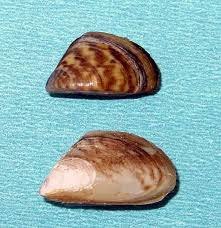 Last week’s Beneath The Surface column titled “Mussels on the Move” reviewed why drinking water, beaches and fish are at risk if zebra and quagga mussels spread to Western Canada and become established in the Columbia Headwaters.
Last week’s Beneath The Surface column titled “Mussels on the Move” reviewed why drinking water, beaches and fish are at risk if zebra and quagga mussels spread to Western Canada and become established in the Columbia Headwaters.
Although there are groups of experts in the B.C. region who are dedicated to developing strategies to prevent this from occurring, ultimately it’s up to each of us — individually and as communities — to stay informed and help to enact a plan to protect our lakes from non-native aquatic hitchhikers. In this second part of the column, you will find out more information about monitoring, and how you can help stop the spread of zebra and quagga mussels into our lakes and rivers.
Mussels monitoring is limited in the region at this time, but is gaining momentum quickly. Inspections of watercrafts for aquatic invasive species are not mandatory, and Canada-U.S. border officials are not trained to identify or remove aquatic invasive plants or organisms attached to incoming watercrafts. However, the urgency of the issue has sparked collaborative efforts across regional organizations and government. Four regional aquatic invasive plant committees are presently pooling their resources and expertise with the goal of creating a Basin-wide program to facilitate inspections and decontamination.
Spread the message, not the mussels
Preventing invasive mussels from entering our lakes is imperative to ensure that the headwaters of the Columbia River remain
drinkable, fishable  and swimmable. There are lots of practical ways you can help. Here are a few tips and facts:
and swimmable. There are lots of practical ways you can help. Here are a few tips and facts:
• The Central Kootenay Invasive Plant Committee urges boaters to clean, drain, and dry their boats and water equipment on dry land before and after entering water bodies to remove visible mud, plants or fish;
• Boats coming from a known or suspected mussel-infested area must be completely drained and allowed to dry for 30 days before entering a new body of water;
• Spread the message. Talk to friends, neighbours and family;
• If you know someone who owns a watercraft or travels with their boat often, ask them what they are doing to help prevent the spread of zebra and quagga mussels;
• Support the work of local government and organizations by raising the issue in community discussions, volunteering help, or contributing funds towards preventative programs and monitoring equipment;
• Support federal policy changes to make training and boat inspection programs mandatory.
Remember, there are no known long-term, environmentally safe means of eradicating zebra mussels once they are established. Prevention is key.
For more information on what you can do to help stop the spread of invasive species, visit bcinvasives.ca/resources/programs/clean-drain-dry/, dontmoveamussel.ca/home and ckipc.ca.
Beneath The Surface is based on the principle that there is often more to know than what is visible from the “surface” of an issue. If there is something that concerns you about the lake and you want to get to the “bottom of it”, call Lake Windermere Ambassadors program co-ordinator Megan Peloso at 250-341-6898 or email info@lakeambassadors.ca and inspire the next column!
